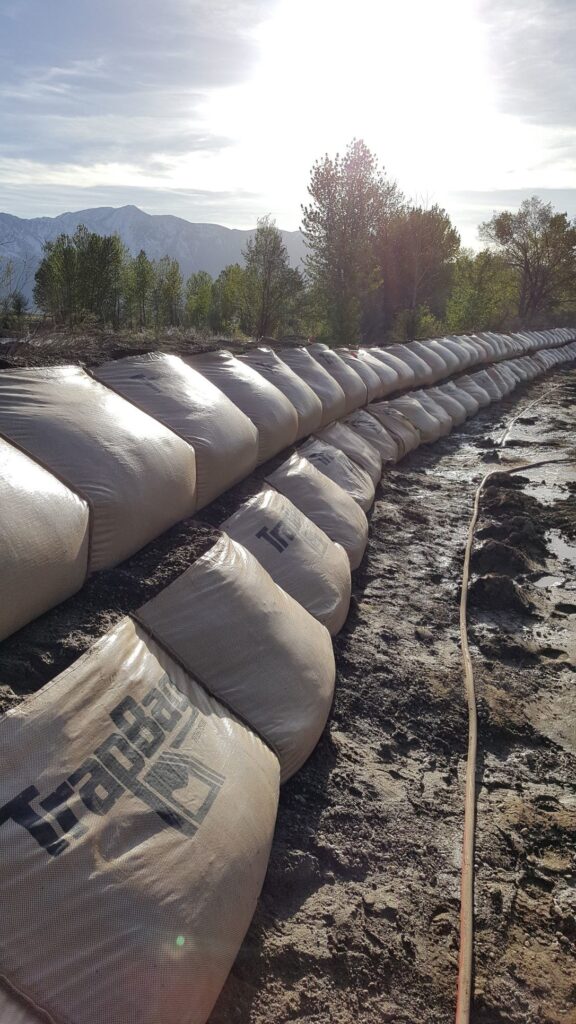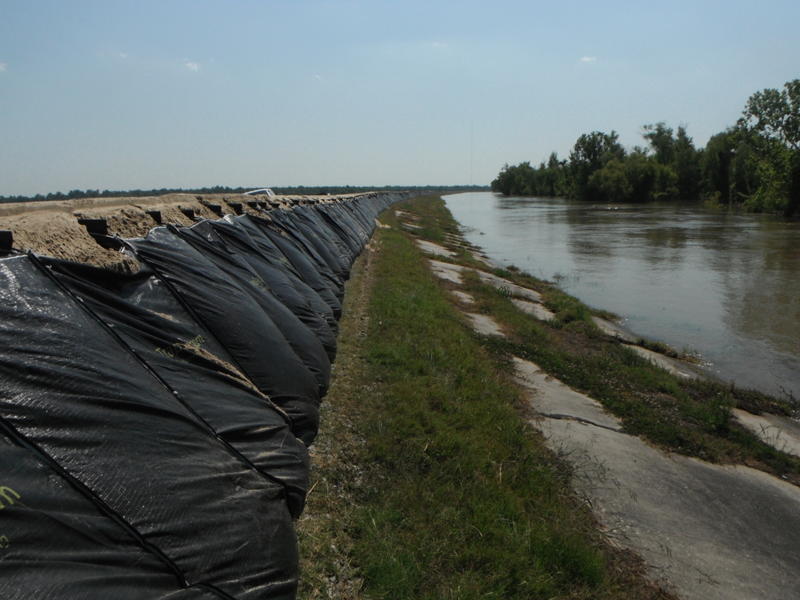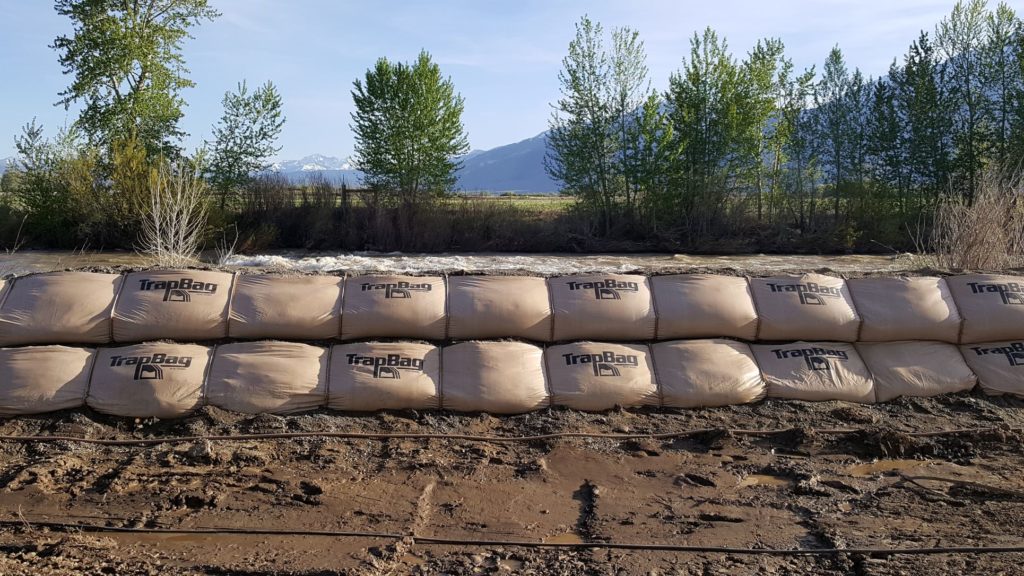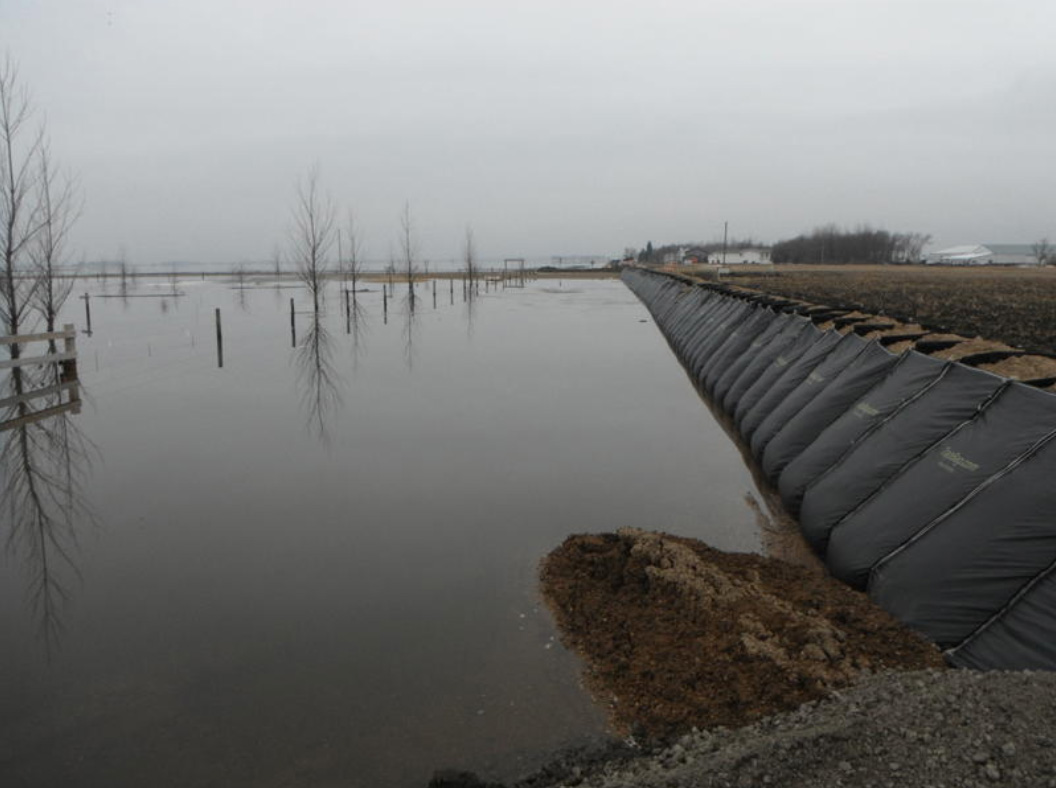How Levee Systems Work During Rapid Flooding
Learn about levee systems and how they prevent and control rapid flash floods. TrapBags are the best solution for your next temporary levee.

What Is a Levee?
A levee is a physical barrier whose primary function is to reduce the risk of flooding near areas with water. These are typical to prevent rapid onset floods such as river floods, though one can also find flood levees near the ocean. The term levee originates from the French levée, which is the past feminine form of the verb ‘to rise.’ The ridges of a levee rise above the channel or floodplains they protect.
Generally, levees prevent only up to a certain amount of water from flooding the land. However, if unprecedented water levels occur, the levee may break or prove too low, causing the area to flood.
Types of Levees
Levees can be natural or artificial, permanent or temporary.
Natural levees
Natural levees are composed of earth materials such as silt and sediment and form organically as the water thrusts these aside. They are most commonly found along low rivers and creeks. By containing the water, natural levees also cause it to flow more rapidly.
Artificial levees
Artificial levees may be built in areas more prone to floods. These can be constructed using a variety of materials, including wood, metal, or plastic. Additionally, piles of natural materials such as soil and rocks are stacked to create the high ridges. Artificial levees may be built to allow for more construction in the area, such as building more housing.
Permanent levees
Permanent levees are constructed using stone, brick, cement, or other tough materials to withstand a flood. These can more closely resemble walls and can require more space on which to be built. The placement of permanent levees is crucial so as not to disturb property lines or drainage patterns.
Temporary levees
Levees that work as a temporary solution (for instance, if a permanent levee breaks, or to allow for bridge building) are typically wide at the base and narrower near the top. Because temporary levees must resist erosion, it is common to utilize vegetation to strengthen them. By planting vegetation, the roots and earth will bind for additional protection. Another common type of temporary levee consists of placing sandbags that will soak up excess water.
Where to Prevent Flash Flooding With Levees
Flash floods are floods that occur very rapidly due to melting snow or ice, thunderstorms, tropical storms, hurricanes, or unusually heavy rain. These impact lower areas such as rivers or lakes. Though they can more commonly impact dry areas after precipitation, flash floods can also occur downstream from the precipitation source.
Due to their rapid nature, flash floods are extremely dangerous. Statistically, most fatalities associated with flash flooding occur when people attempt to cross over a flood in a vehicle. Vehicles, like people, can be swept away in a flash flood. The slogan “Turn around, don’t drown” from the national weather service is meant to advise against attempts to cross these floods.
Because of the unpredictability surrounding flash floods, levees should be a top priority for all areas that may be susceptible to them.
Rivers
Rivers are susceptible to floods due to being lower. Though generally river floods are considered more of a danger to property, they can also prove fatal to people. Large amounts of debris can be swept away onto highways or other transit areas, blocking potential exits. Water levels may rise considerably higher in a matter of seconds during a flash flood, making rivers one of the top places to protect with levees.
Lakes
Lakes expectedly have fluctuating water levels and are therefore not considered as high priority as rivers when it comes to rapid flooding. In addition, lakes will typically have a drain source such as a river or an outlet stream to help balance the water levels. That said, this is not true for every lake, and it is thus important to have in place preventive measures. Closed basin lakes, for example, present a potentially catastrophic situation in the event of a flash flood.
Coastline
Coastal flash floods occur when tide levels rise higher than expected and heavy rainfall exacerbates them. Horizontal levees are helpful in these areas, using hard materials that are set back from a coastal marsh or the like.
Around Floodplains
Levees can further reduce the risk of flash floods when placed along rivers to separate them from flood plains, allowing less water to come through.
How Levees Prevent Flooding: Using Levees To Control Flash Floods and Storm Surges
Maintaining Levee Systems
Because levees provide a barrier through which water cannot travel, their proper maintenance is vital. Maintaining levee systems entails monitoring and checking for any structural damage. This is especially important in areas where natural disasters such as earthquakes are common. It is also key to understand what type of area a levee is meant to protect. For example, a levee that was built to protect vegetation originally may not suffice to protect newly built properties in the area.
Managing Silt Deposits
Adopting a good surface water plan can be very beneficial to managing silt deposits and controlling erosion. It is essential to prevent silt pollution that may cause harm to water ecosystems and aquatic life.
Widening Levee Channels
Improving river channels includes widening levee systems to prevent inundations caused by flood levels exceeding the levee size.
Reinforcing Levees
It is crucial to develop a levee project that includes a reinforcement of levees to prevent soil erosion properly. The use of carefully chosen materials will ensure the prevention of levee flooding.
Preventing Levee Erosion
Constructing an outer layer of the levee will help prevent erosion. This is particularly true when constructing earthen levees.
TrapBag Levees
Though similar to sandbags, TrapBag levees are highly superior: just 100 feet of TrapBags can replace 8,000 conventional sandbags. These are very cost-efficient control barriers that can contain washed gravel, sand, or concrete. TrapBags offer a much quicker and easier way of creating a levee system that absorbs more water while also using less material. Because they are also quick to fill up, it makes them perfect for emergency use. These bags provide durable and strong material to efficiently prevent flooding.
FAQs
How do levees work?
Levees work by providing a physical wall or barrier through which water cannot permeate in the event of a flood, thereby protecting land, property, wildlife, and people.
What are levees made of?
Levees are typically made of earthen materials such as soil, sand, and rock.
What are the risks associated with levees?
The main risks associated with levees are concerning their maintenance. Over time, these can decay or rupture, causing additional pollution problems. The solution is simply applying the proper maintenance techniques.
How do levees fail?
Levees can fail if a natural disaster such as an earthquake causes them to rupture or if the materials wear away or decay due to improper maintenance. Lastly, a levee can fail if its size is not large enough to withstand an unprecedented storm or rising water levels.
How big can a levee system get?
Levees can vary greatly in size. They are typically several feet long and several feet tall, depending on the size of the area in need of protection. Along the Mississippi River, for example, levees can be up to 20 feet tall.
Final Considerations
The advantages of levees are colossal and can make all the difference in a catastrophic event. With their high durability, ease of use, and rapid deployment, TrapBags make excellent tools for creating flood prevention levees. Contact us to learn about you can use TrapBags for your project and create the best levee protection system today!
Get the Dirt Before the Flood Hits
Stay ahead of flooding, erosion, and disaster response challenges. The Dirt, TrapBag’s monthly newsletter, delivers field-tested tips, real-world case studies, and the latest in barrier technology straight to your inbox.



